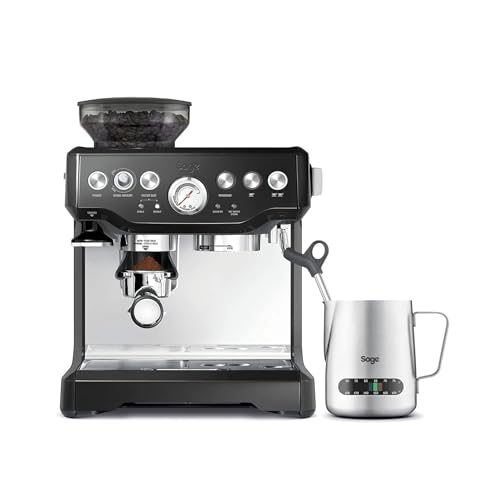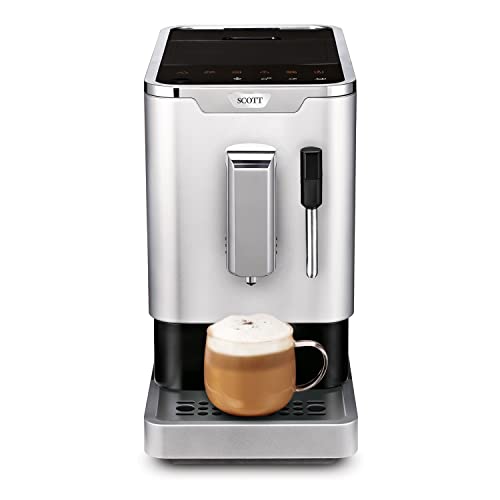
You’ll Be Unable To Guess Coffee Bean Coffee Machine’s Secrets
 Bean-to-Cup Coffee Machines
Bean-to-Cup Coffee Machines
bean to cup coffee beans-to-cup machines are great for those Monday mornings when you’re exhausted and want to hit the button. They offer a certain degree of flexibility for more adventurous drinkers.
They do this by storing the entire beans in a hopper before grinding them prior to making. They then serve beverages with the click of a button. They can serve customers and staff without the expertise of a barista who is trained.
Cost-effectiveness
Each coffee pod has pros and cons, regardless of whether you prefer the traditional flavor or the convenience of pre-packaged pods. Ultimately, cost-effectiveness is a important factor to consider. Bean-to-cup machines are more affordable in the long run than pod-based models. They can help you cut down on the cost of recurring expenses by using bulk-purchased high-quality, premium beans, which can be purchased at a lower price than coffee pods. They can also reduce waste by removing the coffee pods.
Bean-to-cup coffee makers are a great choice for offices due to the fact that they’re very easy to use. In contrast to manual drip-style coffee makers that require the user to grind beans and prepare them manually, bean-to cup machines provide an easy, consistent coffee brew with the click of the button. These machines are also designed to be low-maintenance and easy to clean. Many have built-in rinsing programs and cleaning programs, making it simple to ensure they are running smoothly.
The most significant benefit of a Bean-to Cup machine is its simplicity of use. It is easy to use and set up, and does not require any prior knowledge. It features a built-in grinder, and often has an automatic milk frother, making it ideal for small-sized businesses. Moreover, it provides high-quality coffee at the push of a button, which is convenient for busy offices.
While it is more expensive to purchase a bean-to-cup machine as opposed to a pod model it will save money in the long run by reducing costs for supplies and lowering energy costs. It is also more eco sustainable than pod-based machines because it produces less waste and consumes less energy.
Coffee can be a great way to boost morale and productivity. By installing a bean to cup machine in your breakroom, you will create an environment that encourages collaboration and teamwork. Additionally it can promote interaction between your employees by promoting informal conversations. During these conversations employees can share their thoughts and come up with innovative solutions to problems. A quick cup of coffee will also provide you with a boost of energy and spark your imagination.
Convenience
Bean-to-cup coffee machines provide an affordable way to provide premium coffee at the touch of one button. They are easy to operate and require little maintenance. They are equipped with grinders which ensure that the beans are freshly ground for every cup. They can be programmed to prepare different drinks, such as hot and iced drinks at the touch a button. This allows you to create various drinks for your employees and customers.
A bean-to-cup coffee maker can also help you save money by avoiding the use of plastic cups and paper filters. It also reduces the amount of coffee grounds that end in the trash. If you’re an environmentally conscious individual, you can make use of a coffee maker that provides organic whole beans for a more sustainable and sustainable experience.
Bean-to-cup machines are simpler to use than pod coffee machines. They require minimal or no training. The user just has to fill the bean hopper with water and the water tank before choosing the drink they want from the machine’s easy-to-use control panel. Some coffee bean machines have options to adjust the strength and temperature settings.
While pod coffee machines make use of powdered coffee that is pre-ground The bean coffee machine-to-cup coffee maker grinds whole beans prior to brewing each cup of coffee machines from bean to cup. This helps to preserve the flavour and aroma of the beans, leading to the most authentic taste and texture. These machines also have the ability to tailor each cup of coffee to its user, learning their preferences throughout the day. The Barista TS Smart is an example of such machine that is programmed to make 21 different types of coffee from espresso to long black.
A bean-to-cup machine can also run rinse cycles prior to shutting off and when first switched on, to help stop the accumulation of residues on the coffee spouts and the milk dispenser. Moreover, it will have an internal container to store used coffee grounds and milk. The bin does not have to be empty every day, and usually comes with a visual prompt when it’s full.
Freshness
Fresh-brewed coffee isn’t just delicious however, it also has a variety of health benefits. It can increase metabolism, reduce heart disease risk and provide you with an energy boost that is natural. It is crucial to select the most suitable beans for your machine. Select whole bean coffees that have a clearly marked roast dates to ensure the highest quality and taste for your coffee. This is crucial for bean-to-cup machines that require freshly roasted pre-ground coffee beans. Coffee beans that have been roasted for a long time will be bitter taste and a poor flavor.
The shelf time of coffee beans is dependent on a variety of factors including storage conditions and temperature. If properly stored, unopened bags of whole coffee beans can last up to six months from the date of roasting. After the beans have been ground, the shelf-life of the beans decreases due the increased exposure to oxygen. It is generally recommended to use beans freshly ground within two weeks after opening or grinding.
The appearance of beans can be another way to determine if your coffee is fresh beans coffee machine. Fresh beans will appear shiny, whereas older coffee beans are dull and dry. The smell of the beans can help you determine if they are fresh or not.
When coffee beans are roasted they release volatile aromatic oil that carries the flavor of the bean. These oils are responsible for the distinct flavor of each coffee and if they are depleted of their potency, the taste of the coffee that is brewed will suffer. To avoid this, be sure to buy coffee beans with a clear roasting date. Also, keep them in an airtight jar.
It is also recommended that you grind the coffee for a few days prior to brewing. This will help reduce the risk of oxidation and ensure you get the most flavor. For the best results, don’t store roasted coffee beans in the freezer, as this could cause structural damage and moisture accumulation.
The hopper is an essential component of any bean-to-cup machine, and it must be cleaned regularly to eliminate excess dirt and water. Cleaning the hopper can help to avoid blockages and enhance overall performance. This can be accomplished by taking the hopper out of the machine on a regular basis by washing it with hot water, and wiping it clean with a cloth to remove dust and buildup.
Sustainability
No matter if you consume your coffee from a instant cup, filter, or a capsule that is single-serving the most sustainable option is to purchase beans that are grown and processed sustainably. The roasting and packing processes create lots of waste, which can be avoided by choosing sustainable brands or buying beans that are fair trade certified or UTZ certified. These certifications ensure the farmers who cultivate the beans receive adequate wages and adequate working conditions.
Coffee beans are the largest contributor to greenhouse gas emission. This can range between 40 and up to 80%. This is because big companies make use of intensive irrigation, fertilizers, as well as pesticides to increase the productivity of their crops. This causes deforestation, contaminates water sources, and kills different species. It also causes soil erosion that results in climate change and a loss of soil.
By selecting a bean-to- cup machine it will allow you to reduce your coffee’s carbon foot print by avoiding paper cups and plastic pods. You can go further and share the machine with a person to reduce energy consumption. You can also reduce the environmental impact of your coffee by purchasing a sustainable, refillable pod.
 Espresso machines are more efficient today due to the increasing emphasis on sustainability. A lot of them make use of less electricity. Some are made of recycled materials, and some are 100 percent compostable. They’ll be biomaterials in 84-days of disposal. You can reduce the waste problem by encouraging colleagues to use mugs or reusable tumblers and by offering the composting of coffee grounds. Donating to charities that promote responsible coffee production is another option to aid. You can also minimize the environmental impact of your coffee by avoiding single use accessories such as stirrers or sweeteners.
Espresso machines are more efficient today due to the increasing emphasis on sustainability. A lot of them make use of less electricity. Some are made of recycled materials, and some are 100 percent compostable. They’ll be biomaterials in 84-days of disposal. You can reduce the waste problem by encouraging colleagues to use mugs or reusable tumblers and by offering the composting of coffee grounds. Donating to charities that promote responsible coffee production is another option to aid. You can also minimize the environmental impact of your coffee by avoiding single use accessories such as stirrers or sweeteners.
